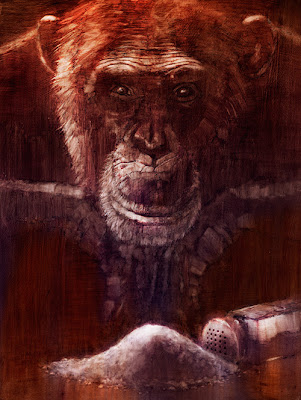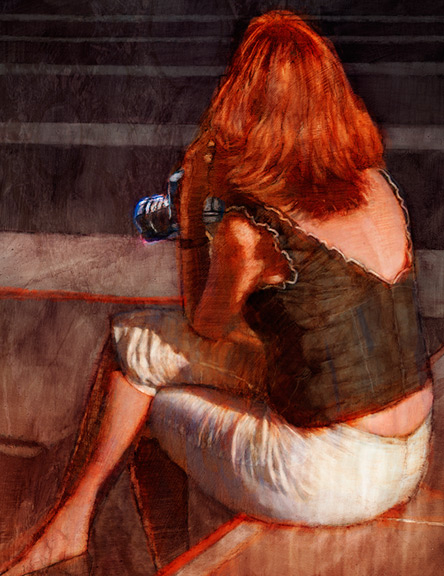
THE CLIENTS
Eyerus + Visual Communications Studio
The Captains of Industry
THE ASSIGNMENT
A calendar, illustrated in the style of '70s Blaxploitation movie posters. Each month will focus on an extremely esoteric holiday (or a popular holiday handled in an extremely esoteric way), all staring The Captains of Industry.
The Captains of Industry are: Graham Funke and StoneRokk, two innovative and eclectic DJs known for their creativity, sense of humor, and opinionated worldviews. You may find them working high-profile corporate and celebrity events around the country, or at their Las Vegas residencies at the Palms Casino Resort. They are "Your favorite DJ's favorite DJs."™
THE CHALLENGE: AUGUST
August's featured holiday is National Aviation Day. National Aviation Day is celebrated on August 19 -- designated as the anniversary of Orville Wright's birthday, and an occasion to celebrate the creation and advancement of aviation. A Titanic-esque aviation snafu is no match for The Capts, as they celebrate their day by raising a glass to the high life.
GETTING STARTED
The Capts took part in a photo shoot to aid in my visual reference. As you can see, they had no trouble getting straight into character, complete with trophy pup. You'll also notice Graham (on the left) using his foot to deny some poor sap entrance to their private raft.

With these images and direction from my art director, it is time to marry concept and vision.
THE PROBLEMS TO SOLVE
- Tell a complex, visually rich story of of a Titanic nature with a sense of order and humor
- Cramming the scene with sight gags and pop culture references that complement the humorous story
- Bring a sense of over-the-top tropical ease to The Capts which aptly contrasts the fervent panic they are oblivious to all around them
For my initial sketch, I started from a low vantage point, giving the guys the majority of the story and power

We needed to give more importance to the interesting story happening, behind them. So, The Capts shrunk in prominence and the frantic passengers filled the water

Approved! Now to have some fun detailing the stories happening with the passengers struggling to distance themselves from the wreckage. A photo shoot allowed me to explore these folks. I asked Melodie and Ricky to take it over-the-top, which yielded some very humorous results.



THE FINAL ART
With the help of Matthew, my art director, we fleshed out quite a few interesting stories for those who take the time to feast upon the scene. They include a Kate Winslet and Leonardo DiCaprio Titanic reenactment, a few scenes from the 1970 disaster movie, Airport (look for a cigar-chomping George Kennedy), plenty of every-man-and-woman-for-themselves battles, a few nuns and sharks, for good measure, and Otto and his lovely inflatable companion, from 1980's, Airplane, calmly rowing away with a wink and a smile.



THE SECRET 'STACHE
Each month of this calendar features Graham rocking a different mustache, integral to each story. This month, he is sporting what I affectionately call, "the Isaac." The name refers to the grinning, epically-'stached bartender from the 1977-1986 television show, Love Boat, memorably portrayed by Ted Lange.


Thanks, again, to the amazing team at Eyerus for allowing me the opportunity to be involved, for their direction, and for fostering an environment for creativity that any illustrator would cherish. Thanks, too, to The Captains of Industry for conceiving such a wonderfully-inspired collection of ideas for the world to devour, as well as for their very generous write-up about the project and their kind words toward me. See it, here.
You may still be able to secure your own calendar at The Capts Online Haberdashery.
Allan Burch is an award-winning illustrator and portrait artist, providing solutions for editorial, book, advertising, and institutional projects.
•View more of his work»
•Sign-up for his newsletter»
•Purchase prints»





























